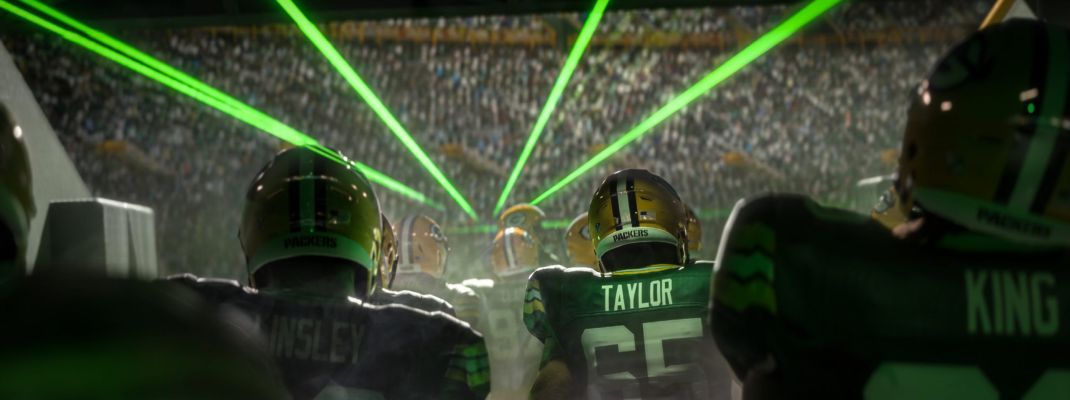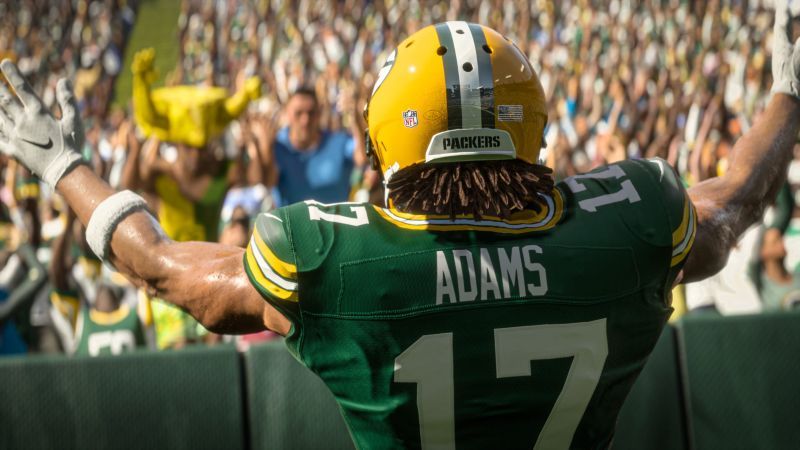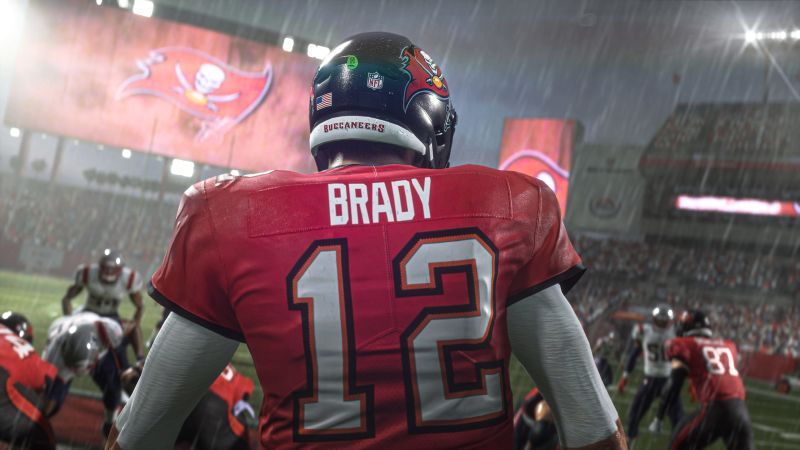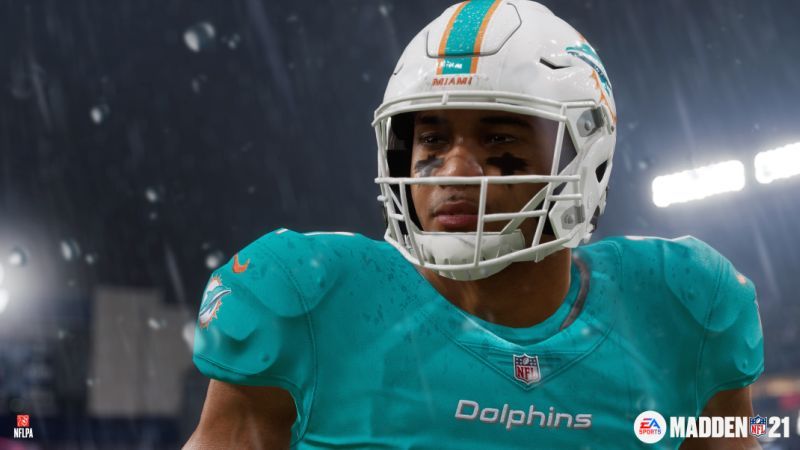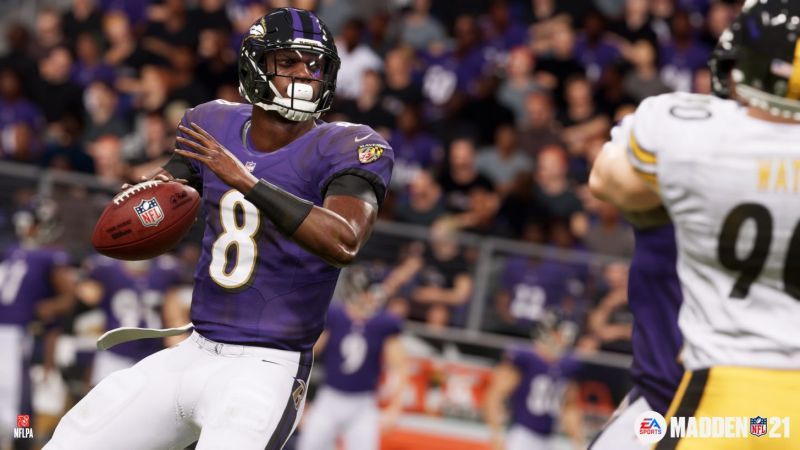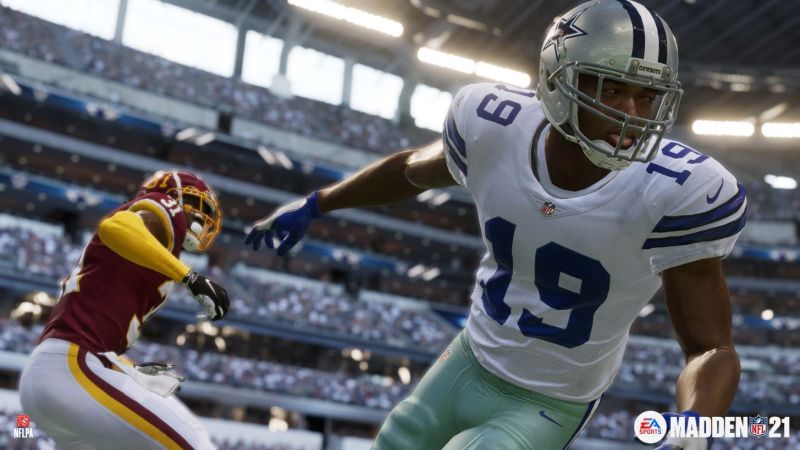Every new console cycle is a chance to push forward gaming franchises for the better. With new hardware, there's the opportunity to rethink a strategy and build from the ground up if need be. With Madden NFL 21, the team at EA Tiburon is basing its gameplay off of new data to change the feel of the title. The inclusion of Next Gen stats from the NFL will allow for a more realistic experience as the players will better closely replicate their individual positions on the field. This, along with 4K resolutions and a 60 FPS experience plus a new lighting engine should propel the series going forward. The result are subtle, yet noticeable changes that still leaves Madden looking and feeling like Madden in the grand scheme of things.
Madden NFL 21 on the next generation doesn't do much to differentiate itself from the previous generation. The inclusion of Next Gen stats and the occasional new replay that implements these stats provide a boost. These replays aren't all that frequent and there's still an overall lack of stat overlays during games. The visuals on next-gen consoles do receive a bump, but nothing substantial. Player faces are more detailed and jerseys flex more. EA has done a better job at creating different player models, but it isn't anything major. There are more cutscenes and all of this is apparent in those. Crowds are better and you can even celebrate in the crowd. You'll notice better animations and gang tackling in the field. What you won't notice is a variety of these changes when playing the game besides a receiver taking a different approach to his route thanks to the Next Gen stats.
The lighting engine has been overhauled and it makes a big difference. Playing games at night or in the weather creates a more dramatic effect. Upon first load of the game (and loading times are instantaneous), you are thrown into last year's AFC Championship at night in the snow. It crawled along in frame rate during the pre-game cutscene, but this is the only time I encountered this. The snow while playing seems to be low resolution on the field. Another issue I encountered is if the camera shifts to the field, even during the day, and there was a major change in lighting, the field looked dark. It would gradually return to normal, but it was noticeable.
EA added Haptic Feedback to the DualSense controller on PlayStation 5. You'll feel your player's every footstep and getting up to speed requires more force on the triggers. This is opposite of NBA 2K21 where it gets harder to press the triggers when stamina gets low. Quarterbacks can now feel the pressure, but the rumble isn't hard enough to notice a difference. What is the big game changer is using the hit stick. Hits feel and sound ferocious thanks to the controller. The PlayStation 5 also brings its 3D Audio to the game. Crowds, stadium music and player chatter are positional, but this is most noticeable during cutscenes. Positional audio doesn't sound as apparent when playing the game. You would think you could better hear defenders coming from one area, but this could be that a lot is going on at once and can't be recognized. If you are expecting a new gameplay experience, it won't happen. The modes carry over from the last generation, but you can import cloud saves. Franchise Mode will include the updates that were added, but there's nothing new here. Face of the Franchise, The Yard and Ultimate Team are the modes that carry over, so if you missed this the first go-around or skipped the previous generation title, they're playable. The menus are the same and riddled with ads for microtransactions.
Face of the Franchise is entering another year as EA hopes to implement a career narrative much like NBA 2K has to attract fans. Once again, the mode feels like a tutorial for how the game plays as it eases new players along to get comfortable and confident. This year, EA implemented a deeper player customization option that also transfers over to The Yard. The narrative has you starting out in high school and playing a couple games as the player immediately makes a frenemy and tries to do the right thing. You will then choose between a couple of NCAA teams to go play for with some missing from previous years. Once done with college, the combine and the NFL are on the horizon. This mode gets a dragged out as EA seemed to want players to spend more time here. This is actually an on-going issue with the game.
In the past, you would always play as a Quarterback whether it was Long Shot or Face of the Franchise. This year, you are able to choose between Quarterback, Wide Receiver and Running Back. This does add replayability to the mode to go back through and play. What is dumbfounding is that rather than just playing your plays when on the field, you now play the entire game. This means you play both sides of the ball. I actually got more interested in how well my defenders and running back were doing. There’s no type of stat tracking or leveling up your character or anyone else. The games are typically blowouts and the mode just reminds me of what we could have with a modern day NCAA game.
The narrative itself is okay at best. It’s still the career rising storyline and there are cameos around every turn. I’ll give the voice acting credit; it is the best it’s been through all these modes in the past. The characters are likable enough and you will answer interactive questions or interview questions in-between games during cutscenes. Also, the high school field strangely for some reason has frame rate drops that aren’t seen anywhere else in the game. Where Face of the Franchise gains some steps, it ends up getting held back with the design of lazily being longer by being forced to play defense and the entire game.
The Yard is the other big addition to the game in terms of gameplay modes. EA has wanted to implement a backyard-style football mode with a focus on arcade action. There’s no doubt that the team did add more animations specifically for this mode as you’ll see different types of catches, throws and tackle breaking. The problem is that it doesn’t feel like a true arcade mode. It literally plays like the normal, simulation version of the game. It lacks fast play and the pacing is just off. The focus feels purely on celebrating and the individualistic design the team did set out to create. You will unlock new gear just from playing the game, but a ton of it is buried behind microtransactions with the max amount points coming in at $99.99. That might net one piece of the elite gear. Going back to the game mode, there’s no announcer, the mode just plays the soundtrack over a PA speaker and the same typical gaffs that plague the regular gameplay carry over here. Passes that should be easily caught or even sideline passes being called out of bounds. It’s an arcade mode. Two feet versus one feet shouldn’t matter but it happens a good bit.
The Yard offers up to 3v3 multiplayer, but again getting involved and the ability to reach this point takes forever. The games are six minute games, much like Face of the Franchise. You will go through a ton of tutorials and challenges just to get to the point to play with your friends. These aren’t like two minute quarters that are fast paced. You will select different Prototypes for your player as they play both sides of the ball. Leveling up each individual Prototype is a grind and there are a few. Each one offers different abilities but in the grand scheme of things they don’t stick out like the Superstar X-Factors do. Overall, The Yard feels like EA got an early jump on 2K for their eventual arcade title and it isn’t fully polished to be a true arcade experience and is more focused on microtransactions for digital clothing.
In terms of other modes, the same as last year are retained. And by retained, I mean are exactly the same. Madden Ultimate Team will continue to keep its fanbase engaged by grinding for cards and spending money. You can do missions where you get a chance to play games with the player you can eventually unlock. Rivalz were added, but it’s just another way to grind for more cards. Some of the missions are shorter to complete than waiting through the loading and transition screens. At least NBA 2K and MLB The Show will provide access to some high level cards in their modes, but cards continue to evolve and the only way to keep up is consistently grind or pay money. Even with this mode, which is the money maker, nothing has changed besides new cards, new ways to get cards and players having to start over from the previous year.
For Franchise Mode, there’s still a disconnect from the rest of the league you’re in. You are able to up the roster size and can still relocate teams to pre-determined cities, but this is nothing new. The same screen with your coach on it fielding texting messages and doing the same prep are prevalent. The mode is completely stale and one can only hope it gets addressed. Superstar KO, which was introduced last year, is literally the same. Traditional online play options are limited and the online play still produces a delay in gameplay that you don’t account for when playing offline. These are the same issues from year to year that we can only hope get addressed for the next generation.
Where the gameplay felt sped up on the previous generation, EA seems to have slowed things down a notch in the new generation. Superstar X-Factor 2.0 seems to further separate the field even more than before. Wide receivers who have one of these designations are miles ahead the competition. Christian McCaffrey, for one, rarely goes down after one hit. He’s so quick to juke and spin that it’s devastating. This may be due in part to the new overpowered run game. You’ll clearly see a hole to run through and while it comes off as random, it’s more common than not. The offensive line will push the defense out and away to make sure you can hit the second level to try to put on that one on one move on a safety or linebacker. On the newer generation, there are instances of defensive rushers getting caught up in each other's legs. Sometimes you think you have an opportunity and the defender warps off the blocker. Blockers are still used in the open field to create separation from the defender based on the defender’s angle. The blocker isn’t chasing someone down to knock them out. It still comes down to positioning the ball carrier to make sure the blocker picks up the defender. This remains true on the next-generation version.
Basically, a lot of the issues remain despite new animations and changes to AI. Zone defense is still ineffective, but it seems to throw off the AI quarterbacks better. Changes seem to exist to quarterback decision making and throws, as I feel the new generation game truly does feel less scripted. If the coverage matches up well, quarterbacks will miss. I was able to lead a receiver and have him catch a ball properly over his shoulder. At times, everything feels right, but it's too inconsistent. Both receivers and defenders have better head tracking for looking at the ball, but I've encountered reactions that just aren't natural. A defender's head will hone in at the football at the last second and in the opposite direction, and the animation will just shift to them making a play. EA needs to focus on removing the shortcuts and letting the play develop and just work.
Online play, while still offering that delayed input that you don’t get offline, goes strange ways to try and keep things balanced. With no lobbies, the quick match for traditional play is still here. In a game I played, interceptions were exchanged four times as were fumbles. One was a fumble into the end zone that randomly had the ball pop back in the receiver's hands. It’s the same online experience the series has had for years. The final nail in the coffin for lacking a new, next-generation experience are the commentators. Brandon Gaudin and Charles Davis remain and they end up holding back what's a new genuine experience. The crowd chants and stadium sounds are much better, but with the sounds and overall look, it still makes it feel like an upgraded Madden NFL 21.
The marketing this year for all EA Sports games has changed. It feels as if this is aimed at a younger fan base and Madden NFL 21 exemplifies that. Gone are the days of passionate NFL football, the dramatics of the sport and the grittiness. This has been replaced with the ability to celebrate after every play and a colorful palette that mimics mobile games or social media. The soundtrack is completely catered towards a younger crowd and EA even got rid of the official NFL music in the game. There’s a composer that came in and did his own songs that tend to be a chill version of traditional NFL music.
Closing Comments:
Madden NFL 21 on next-gen consoles is undoubtedly an upgraded version of the previous generation, but it doesn't make leaps and bounds to reinvent the franchise. Even though there are improved visuals and EA Tiburon implemented Next Gen stats, this still feels like Madden. A lot of the legacy issues are still here, but aren't as apparent. When you have a series that thrives on eSports, it's difficult to switch the formula. The controller feedback from the DualSense is the bright spot of the experience, but the visuals were already good on last gen and just get a further polish here. You'll encounter changes you appreciate piece-by-piece, but when you finish a game, you'll feel that it's still just Madden.

